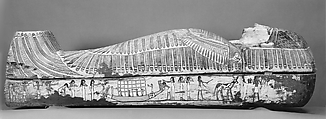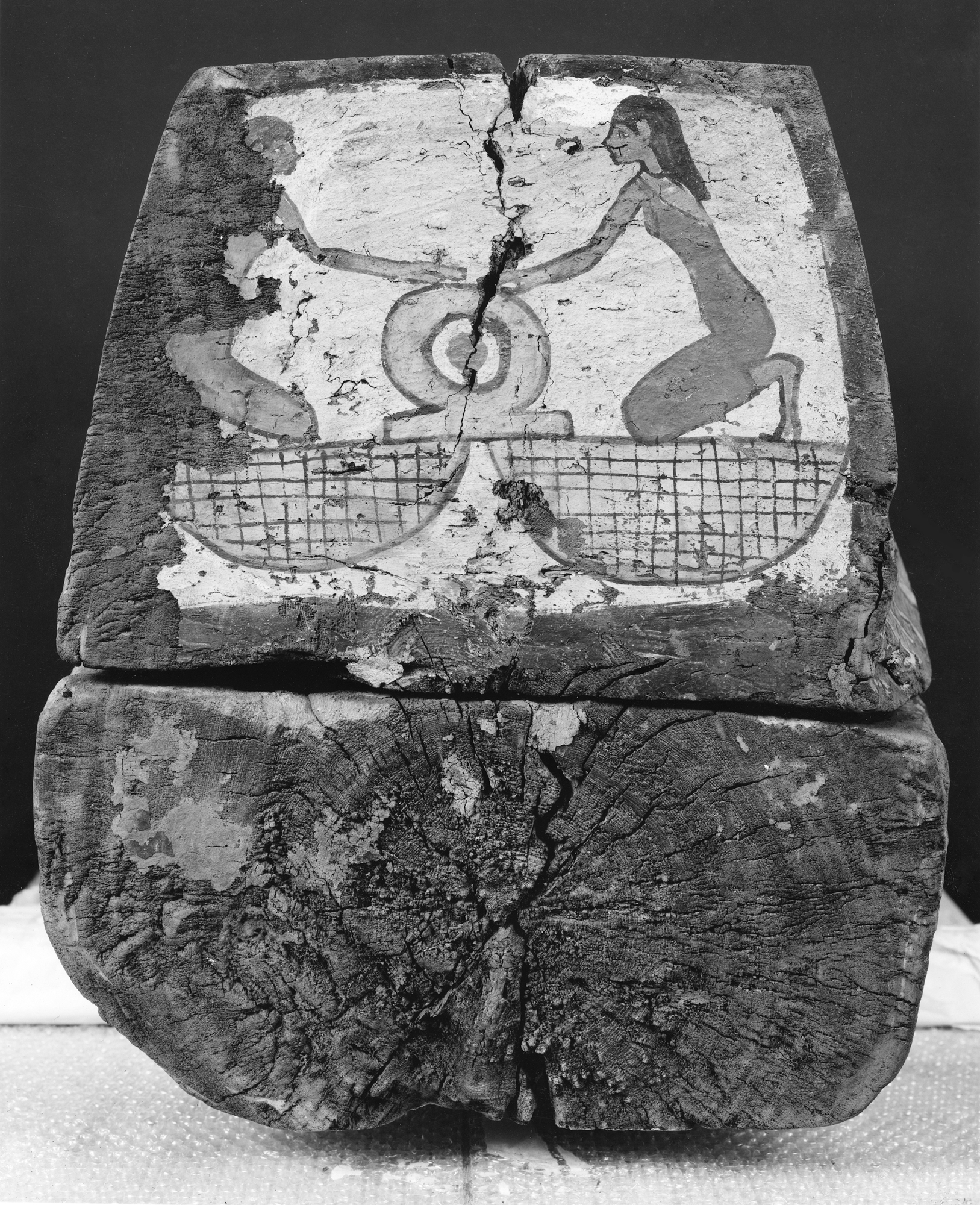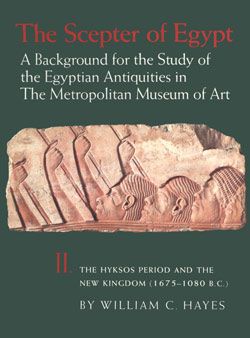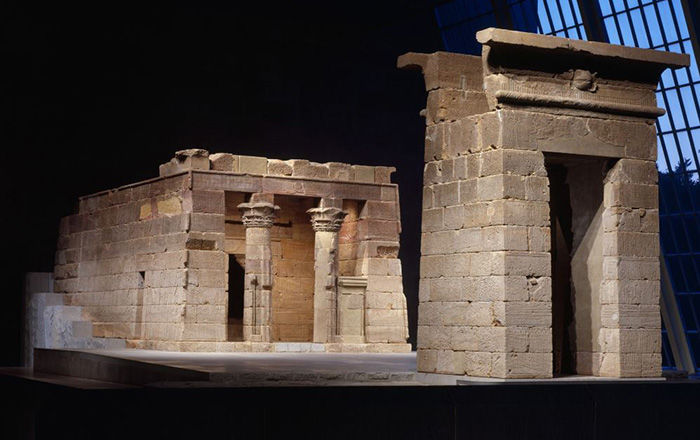Rishi coffin
Second Intermediate Period–Early New Kingdom
Discovered in a tomb cut into the courtyard of a larger Middle Kingdom monument, this is an interesting example of a rishi (feathered) coffin. As is the case on most coffins of this type, the crudely-carved and painted face of the deceased is shown framed by the striped nemes headcloth, in this case with short feathers shown covering the top. Around the neck is painted a broad collar with falcon-head terminals; a vulture, its wings outstretched, protects the chest. Covering the body are feathers of various sizes, representing a bird's body, tail,, and wing feathers. A vertical band of inscription down the center of the lid asks that Ptah and Osiris give royal offerings to the ka of the deceased. Unfortunately, the name of the coffin's eventual owner was never added to the space at the end, although the mummy of a woman was found inside. On the front of the feet are figures of the jackal-god Anubis on a shrine, and on the bottom of the feet, Isis and Nephthys kneel facing one another on neb baskets, flanking a shen that symbolizes eternity.
What makes this coffin unusual is that the box, normally painted a solid black on coffins of this type, has been decorated with scenes: on the left is the funerary procession; and on the right are the offering ceremonies being carried out in front of the mummy, which has been set up front of the tomb. Such scenes are more commonly found on "white" coffins of the early 18th Dynasty (see for example 14.10.2a, b), suggesting a transitional date for this example.
This image cannot be enlarged, viewed at full screen, or downloaded.
This artwork is meant to be viewed from right to left. Scroll left to view more.





